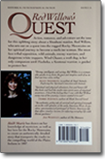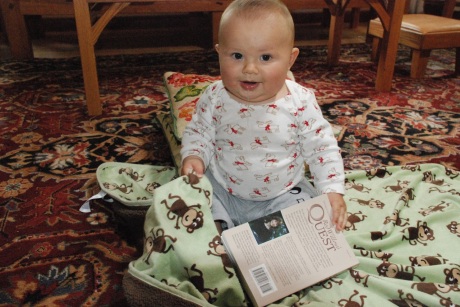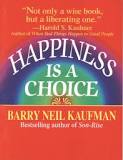As much as I love the feel of a book, the future of the publishing industry seems to be moving more toward eBooks, so I decided to put my toe in the water and convert my novel Red Willow’s Quest into an eBook.
The first thing I did was to have it professionally edited to make the writing even stronger. A well-edited eBook is as important as a well-edited print book.
The next step was to decide if I should design a new cover or use the original one. Many people decide whether to buy an eBook based on the cover. With eBooks it’s a challenge to create a cover that shows the title, author’s name and art work clearly when the image may only be an inch high on some sites. The author also has to consider that the eBook illustration might be black-and-white, so it needs to look good in black-and-white as well as color. I already had a cover design for my novel when it was originally printed, so I decided to use the same cover.
The third step was to convert the electronically word-processed book file into the proper eBook formats. While it’s possible to do this yourself, it takes time to learn and it’s not expensive to hire someone. Before giving your file to someone to format, be sure to read over the manuscript again to ensure that there are no errors. It’s helpful to also have someone else proofread it because once it’s formatted it costs money to make any changes.
A friend recommended the company I used to format my manuscript. He formatted in several different ways so that it can be read on different kinds of readers. For example, Amazon needs a different format than an iPad.
After this was done, it was ready to post on Amazon. I decided to do it using the Amazon Select program. With this program, Amazon has exclusive rights to publish the eBook for 90 days. During these 90 days, you can give the manuscript away for free on several different days. This is a way to generate interest in the eBook, as word-of-mouth endorsements can be a very effective way to become virally known.
At this point in the process I was set to go, but still felt intimidated by the process of actually putting the file up on Amazon. Fortunately my daughter helped me set up an account on Amazon and download the file. It was fairly easy to do and I’m sure I can do it without help in the future.
Now my book is available on Amazon both as print book and an eBook.
If you like exciting, historical fiction novels, read Red Willow’s Quest. Here is the back cover blurb:
Action, romance and adventure set the tone for this uplifting story about a Shoshoni maiden, Red Willow, who sets out on a quest to become a medicine woman in the rugged Rocky Mountains. She must face tribal opposition, wild animals, enemy warriors and dangerous white trappers. Wind Chaser, a wolf-dog, is her only companion until Masheka, a Kootenai warrior, is guided to protect her.

Back cover
The book garnered good reviews in Bloomsbury Review and Colorado Libraries Mpls. St. Paul Magazine. I look forward to giving my novel new life as an eBook.



























Recent Comments